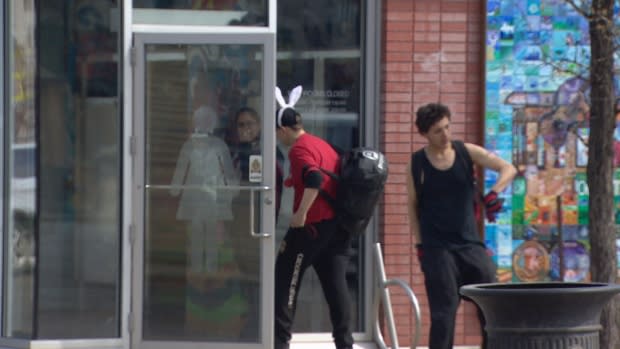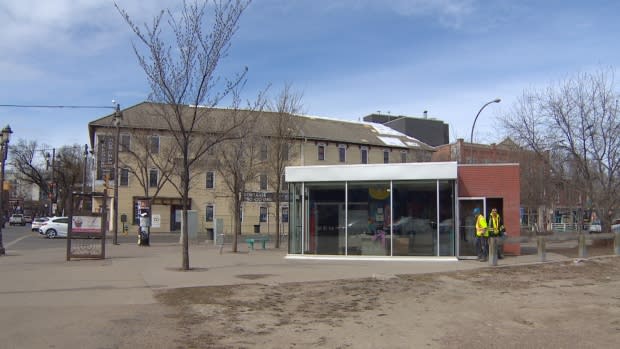Edmonton aims to improve access to public toilets
Safer and cleaner public washrooms could be hitting Edmonton streets but it could take up to 10 years to accomplish that, a city report shows.
In the City-Wide Public Washroom Strategy, the city acknowledges Edmontonians have "general preference to avoid using public washrooms." The new strategy aims to make washrooms more accessible and fix some of the common complaints from the public.
Safety, cleanliness and lack of running water are the main issues people have, according to the report.
The city collected feedback from the public and from businesses last fall through online and in-person surveys.
'You want to know that it's clean and it's safe'
Ren Milmine takes the LRT on a regular basis and said she uses the public toilets reluctantly.
"They're either findable but so nasty I don't want to use them, or they just don't exist," she told CBC News on Friday.

Milmine said she used the public washroom at Churchill station.
"That was pretty gross and I've also used the one at the Coliseum station, that is also terrifying and gross," she said."The kind of stuff that's in there that has nothing to do with the bathroom business is just disturbing. Lots of garbage, needles."
A patron of the retail and entertainment district around Whyte Avenue, Michelle Roline, also said she's reluctant to use public facilities.
"You don't know your surroundings, you're not at home using the washroom," she said. "You want to know that it's clean and it's safe."
Goal: Improve access to public washrooms
Edmonton has 114 public washrooms, but the city estimates it will take one to two years to come up with consistent standards on managing city-run washrooms, including hours they're open, signs needed to direct people, and cleaning and maintenance.
In phase one of the initiative, the city will explore partnerships with "socially-conscious businesses" to provide washrooms to non-paying patrons.

They also want to engage not-for-profit agencies to develop a model.
Once the toilets are operated with similar standards, the next phase will be to evaluate and identify gaps in service.
The city report says phase two could take two to five years.
Finally, in phase three, the city would integrate a public and private model for new permanent washroom facilities in areas of need.
Maureen Duguay, president of Old Strathcona community league, said she'd like to see action on the issue, because the city has studied this issue sufficiently.
"There are cities all over the world who have dealt with this issue," she said. "Surely we can come up with something, you know, some good concrete examples of how to do how to do this."
Signs, pilot projects, consultation
In 2018 and 2019, the city said it took several steps toward improving access to public facilities.
That included installing signs that point the way to public washrooms, showing how long it's estimated to walk there and whether it's a gender neutral washroom.
In a pilot project, they put up port-a-potties at nine locations identified as high-need by citizens, businesses and social agencies.
A survey was sent out to local businesses with the majority — 74 per cent of 91 businesses — indicating limited support for providing public access to washrooms within their business.
On Whyte Avenue, Roline has noticed businesses are eager to invite people in to use the washroom.
"I understand why they're not allowing people to come in and use their facilities 'cause they don't know if someone's going to be using drugs or not."

Duguay said non-profit organizations and businesses need more resources to keep track of what people are doing in public bathrooms.
"It's monitoring no matter what," she said.
The bathrooms in the community league building in Old Strathcona are open to the public in the summer, but are closed after hours.
The city plans to work with businesses, not-for-profit organizations, and other potential partners over the next 12 months to come up with a "governance model and shared operating standards."
On Wednesday, council's community and public services committee will have a chance to give their feedback on the city's plan for safer, cleaner and more accessible public washrooms.
@natashariebe

